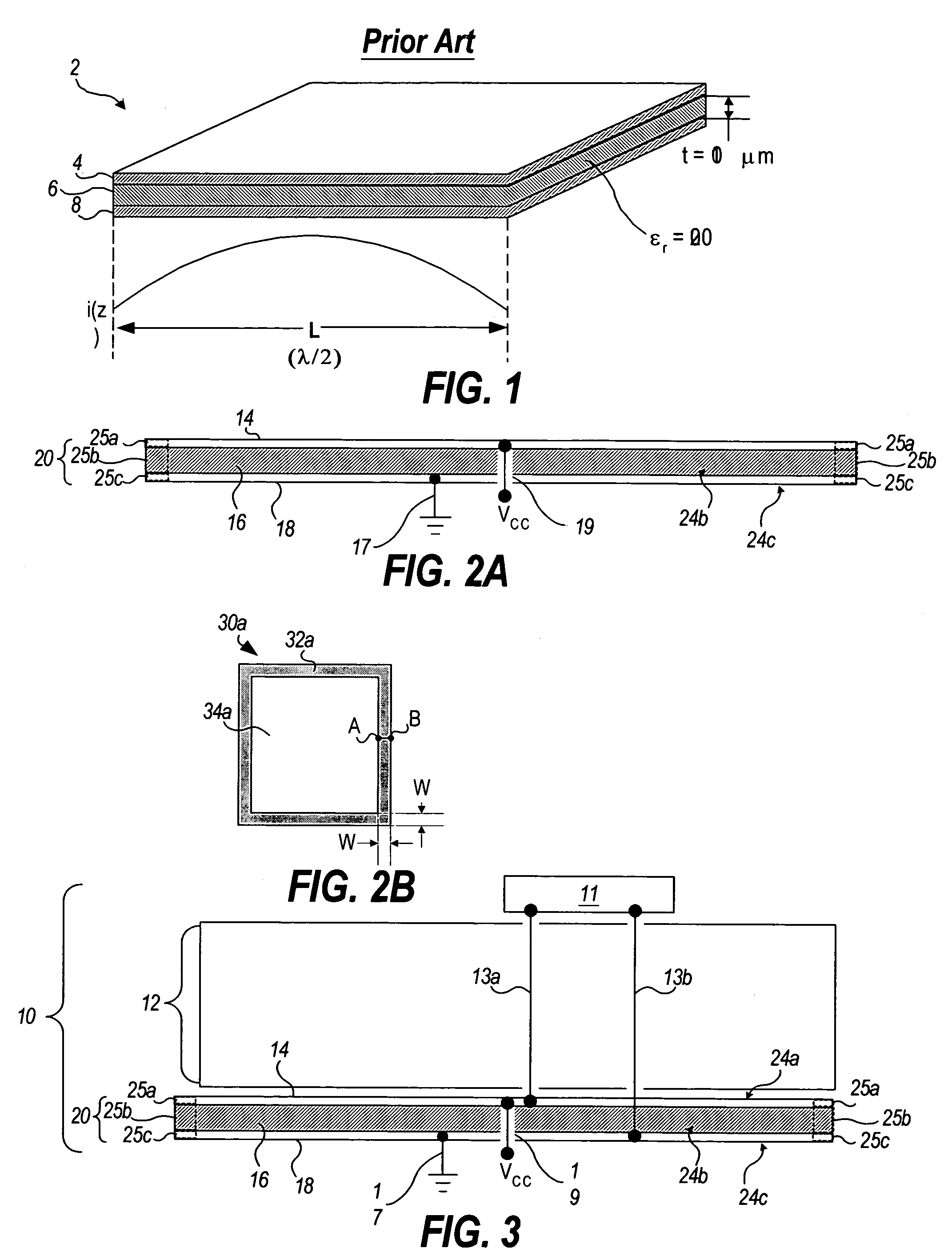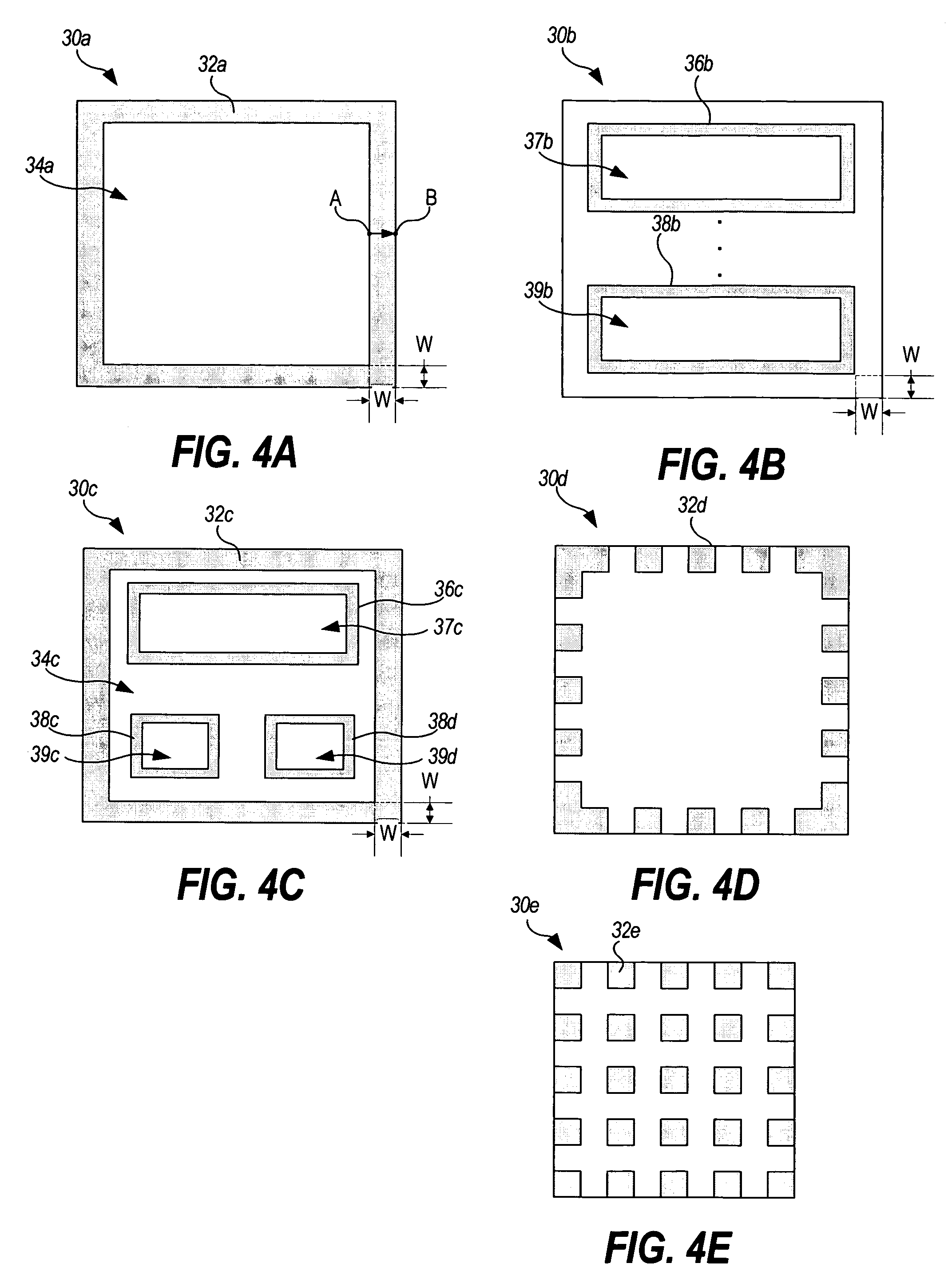Integral charge storage basement and wideband embedded decoupling structure for integrated circuit
a charge storage and integrated circuit technology, applied in the direction of cross-talk/noise/interference reduction, printed resistor incorporation, printed electric component incorporation, etc., can solve the problems of increasing the complexity of electronic circuitry, the design of power distribution decoupling network is problematic, and the decoupling circuit is increasingly complex, so as to reduce the number of bypass capacitors and eliminate the plethora of bypass capacitors. , the effect of saving component and assembly costs
- Summary
- Abstract
- Description
- Claims
- Application Information
AI Technical Summary
Benefits of technology
Problems solved by technology
Method used
Image
Examples
Embodiment Construction
[0059]In order to more fully understand the present invention, we turn now to consider the prior art parallel plate capacitor structure 2 diagrammed in FIG. 1. The structure 2 is formed with a dielectric 6 sandwiched between two conductive plates 4 and 8 at different voltage potentials (e.g., VCC and ground, respectively). The structure 2 exhibits resonances due to waves that move laterally in the capacitor and that are reinforced by multiple reflections off the edges of the capacitor at frequencies where the path length (L) is a multiple (N) of a half (½) of a wavelength, λ—that is, L=Nλ / 2. The first resonance, f1, occurs at the frequency where the capacitor is half a wavelength (λ / 2) long. Additional resonances occur whenever the length is an integer (N) multiple of λ / 2, giving the frequency of the Nth resonance, fN, as
[0060]fN=N2cLɛr(1)
[0061]where εr is the relative dielectric constant of the material of the dielectric 6 separating the plates 2 and 4 of the capacitor and c is t...
PUM
 Login to View More
Login to View More Abstract
Description
Claims
Application Information
 Login to View More
Login to View More - R&D
- Intellectual Property
- Life Sciences
- Materials
- Tech Scout
- Unparalleled Data Quality
- Higher Quality Content
- 60% Fewer Hallucinations
Browse by: Latest US Patents, China's latest patents, Technical Efficacy Thesaurus, Application Domain, Technology Topic, Popular Technical Reports.
© 2025 PatSnap. All rights reserved.Legal|Privacy policy|Modern Slavery Act Transparency Statement|Sitemap|About US| Contact US: help@patsnap.com



